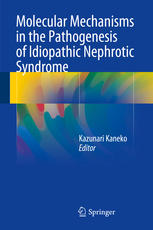

Most ebook files are in PDF format, so you can easily read them using various software such as Foxit Reader or directly on the Google Chrome browser.
Some ebook files are released by publishers in other formats such as .awz, .mobi, .epub, .fb2, etc. You may need to install specific software to read these formats on mobile/PC, such as Calibre.
Please read the tutorial at this link: https://ebookbell.com/faq
We offer FREE conversion to the popular formats you request; however, this may take some time. Therefore, right after payment, please email us, and we will try to provide the service as quickly as possible.
For some exceptional file formats or broken links (if any), please refrain from opening any disputes. Instead, email us first, and we will try to assist within a maximum of 6 hours.
EbookBell Team

4.7
96 reviewsThis comprehensive book reviews our current state of knowledge about the pathogenesis of idiopathic nephrotic syndrome (INS), which comprises a heterogeneous group of diseases with distinct histological characteristics, such as minimal-change nephrotic syndrome (MCNS), focal segmental glomerulosclerosis (FSGS), and idiopathic membranous nephropathy (IMN). As the word “idiopathic” indicates, the pathogenesis of INS remains unclear. Historically, T-cell dysfunction has been thought to play an important part in the pathogenesis of MCNS, while circulating vascular permeabilities have been believed to induce proteinuria in FSGS. The book further describes recent advances in molecular biology, which have allowed us to speculate on the interactions between visceral glomerular epithelial cells (podocytes) and the relative significance of several molecules in the pathogenesis of INS, such as reactive oxygen species, nuclear factor-kappa B, CD80, angiopoietin-like 4, cardiotrophin-like cytokine-1, and M-type phospholipase A2 receptor. The normally rapid pace of scientific progress occasionally devolves into a state of chaos, and the pathogenetic research on INS is one such case. This volume will help researchers and scientists to collaborate, share resources, and expedite the design of protocols to evaluate the putative factors.